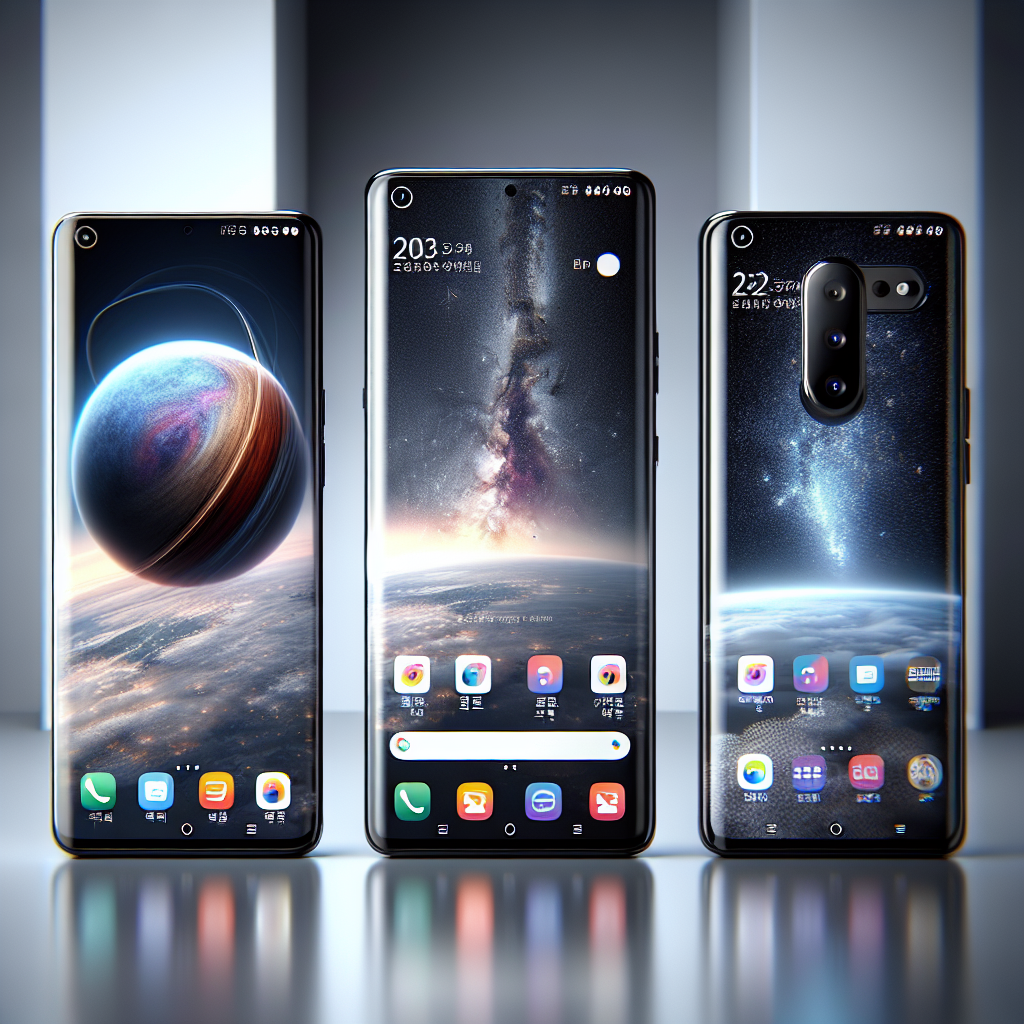Looking to upgrade your trusty old phone? Look no further! This article serves as your ultimate smartphone buying guide, providing you with a handy set of top tips to consider before making your purchase. Whether you’re a tech enthusiast or simply in need of a reliable device, we’ve got you covered. From understanding the importance of screen size and camera quality to exploring the benefits of different operating systems, this article will help you make an informed decision and find the perfect smartphone that suits your needs. So, let’s get started on your journey to find your new favorite device!

1. Consider your needs and budget
When it comes to buying a smartphone, it’s essential to consider your needs and budget before making a decision. Take some time to analyze what you will primarily use the phone for and determine how much you are willing to spend.
1.1 Analyze your needs
Think about how you plan to use your smartphone. Will you be using it primarily for work or personal use? Do you need it for gaming or entertainment purposes? Are you looking for a phone with a great camera? Understanding your needs will help guide you towards the right phone that can fulfill those requirements.
Consider factors such as the processing power, storage capacity, and battery life that will be suitable for your usage. If you are a heavy user who needs to multitask and run demanding applications, you may want to prioritize smartphones with more powerful processors and higher amounts of RAM.
1.2 Determine your budget
Setting a budget is crucial before diving into the smartphone market. Smartphones come in a wide range of prices, so it’s essential to determine how much you are willing to spend. Consider how long you plan to keep the phone and the features you cannot compromise on. This will help you find the right balance between affordability and functionality.
2. Research different operating systems
Next, it’s vital to research and understand the different operating systems available for smartphones. The three major operating systems in the market are iOS, Android, and Windows. Each has its strengths and weaknesses, so it’s essential to choose the one that aligns with your preferences and needs.
2.1 iOS
iOS is the operating system used exclusively on Apple iPhones. It is known for its user-friendly interface, seamless integration with other Apple devices, and regular software updates. If you already own other Apple products such as iPads or MacBooks, choosing iOS can provide a cohesive ecosystem.
2.2 Android
Android is an open-source operating system used by various smartphone manufacturers such as Samsung, Google, and OnePlus. It offers a greater degree of customization, compatibility with a wide range of apps, and wider pricing options. Additionally, Android offers flexibility in terms of screen sizes, designs, and features.
2.3 Windows
Windows, mainly known for its prevalence on PCs, also offers an operating system for smartphones. However, compared to iOS and Android, it has a smaller market share. Windows phones provide a unique user interface and integration with Microsoft services such as Office apps. However, the availability of apps and updates may be limited compared to the other two systems.
2.4 Others
Apart from the major operating systems mentioned above, there are also lesser-known operating systems like BlackBerry and KaiOS. While these are not as widely used, they may offer unique features and cater to specific user preferences. It’s essential to consider these options if they align with your requirements.
3. Determine the right screen size
Choosing the right screen size for your smartphone is important as it will impact your overall user experience. Different screen sizes offer various advantages and disadvantages, so it’s important to consider your needs and preferences.
3.1 Small-sized screens
Small-sized screens, typically ranging from 4 to 5 inches, offer a compact and pocket-friendly design. They are easier to handle with one hand and provide a comfortable typing experience. However, the smaller screen size may limit the viewing experience, especially for multimedia content or gaming.
3.2 Medium-sized screens
Medium-sized screens, ranging from 5 to 6.5 inches, strike a balance between portability and a larger viewing area. They provide a better multimedia experience, allowing you to enjoy movies, videos, and games with more immersion. Additionally, medium-sized screens offer a comfortable typing experience while still being manageable with one hand.
3.3 Large-sized screens
Large-sized screens, typically above 6.5 inches, are ideal for users who prioritize media consumption and gaming. These screens provide an immersive experience with vibrant colors and ample viewing real estate. However, they may be less convenient to handle with one hand and may not fit comfortably in smaller pockets or bags.
Consider your lifestyle and usage patterns to determine the right screen size for your needs. If you prioritize portability and easy one-handed use, a smaller or medium-sized screen may be more suitable. On the other hand, if you consume a lot of multimedia content or play games, a larger screen may be the better choice.
4. Assess the display quality
A smartphone’s display quality is an important aspect that contributes to the overall user experience. Consider the following factors when assessing the display quality of a smartphone:
4.1 Resolution
Resolution refers to the number of pixels on the screen, usually measured in pixels per inch (PPI). A higher resolution means a sharper and more detailed display. Most smartphones nowadays offer Full HD (1920 x 1080 pixels) or even Quad HD (2560 x 1440 pixels) resolutions. However, keep in mind that higher resolutions also require more processing power and may impact battery life.
4.2 Pixel density
Pixel density is closely related to resolution and refers to the number of pixels packed within an inch of the screen. Higher pixel density results in crisper images and text. Retina displays on iPhones and AMOLED or OLED screens on Android devices generally offer excellent pixel density.
4.3 Display type
Smartphones use various display technologies, such as LCD, AMOLED, and OLED. LCD displays are commonly found on budget or mid-range devices, while AMOLED and OLED displays are often used on flagship smartphones. AMOLED and OLED screens generally offer deeper blacks, vibrant colors, and better contrast ratios compared to LCD screens.
Consider your preference for color accuracy, contrast levels, and deep blacks when evaluating the display quality. If you enjoy watching videos or playing games with stunning visuals, AMOLED or OLED displays may be more appealing. However, keep in mind that these display types can sometimes be more expensive.

5. Evaluate the phone’s performance
The performance of a smartphone plays a crucial role in ensuring smooth multitasking, fast app loading, and lag-free gaming. When evaluating a phone’s performance, pay attention to the following key components:
5.1 Processor
The processor, also known as the central processing unit (CPU), determines the overall speed and efficiency of the phone. High-performance processors from manufacturers like Qualcomm or Apple tend to offer smooth performance, especially for resource-intensive tasks. Look for processors with multiple cores and higher clock speeds for better performance.
5.2 RAM
Random-access memory (RAM) is responsible for temporary data storage when apps are running. Higher RAM capacity allows for smoother multitasking and faster app loading times. If you often run multiple apps simultaneously or use memory-intensive applications, consider smartphones with at least 4GB or 6GB of RAM.
5.3 Storage capacity
Storage capacity determines how much data, such as apps, photos, videos, and music, you can store directly on the phone. Most smartphones offer a range of storage options, such as 64GB, 128GB, or 256GB. Consider your needs for storage and choose a capacity that can accommodate your usage without constantly running out of space. Additionally, some phones also offer cloud storage options for extra flexibility.
5.4 Battery life
Battery life is a crucial factor to consider, especially if you rely heavily on your smartphone throughout the day. Look for smartphones with larger battery capacities and efficient power management systems. Keep in mind that battery life can vary depending on your usage patterns and the features you enable, such as GPS or mobile data. Reviews and user feedback can give you an idea of the real-world battery performance.
6. Consider camera capabilities
For many smartphone users, the camera plays a significant role in their decision-making process. If photography is important to you, consider the following factors when evaluating a smartphone’s camera capabilities:
6.1 Megapixel count
While the number of megapixels doesn’t determine the overall photo quality, it does play a role in the level of detail captured. Higher megapixel counts can result in sharper images, especially when zooming in or cropping. However, other factors such as image processing and the quality of the camera sensor also contribute to the final image quality.
6.2 Additional camera features
Apart from megapixel count, consider the additional features and capabilities of the camera. Look for specifications such as aperture size, optical image stabilization, and HDR (High Dynamic Range) to ensure better low-light performance and improved dynamic range in photos. Additionally, features like night mode, portrait mode, and different shooting modes can enhance your photography experience.
When choosing a smartphone based on camera capabilities, consider your specific needs. If you enjoy taking high-quality photos or frequently capture memories, prioritize smartphones with better camera features and image processing capabilities.

7. Explore connectivity options
Connectivity options determine how the smartphone interacts with other devices and networks. Consider the following connectivity options when making your decision:
7.1 Cellular connectivity
Make sure to check if the smartphone supports the cellular frequencies and bands used by your network provider. This ensures that you will have reliable network coverage and fast internet speeds. Additionally, consider if the phone supports 4G or 5G networks for faster data transmission.
7.2 Wi-Fi
Wi-Fi connectivity allows you to connect to wireless networks, such as your home or office network. Look for smartphones with support for the latest Wi-Fi standards, such as Wi-Fi 6, for faster and more stable connections. Dual-band Wi-Fi capabilities can also provide better connectivity in crowded areas with multiple networks.
7.3 Bluetooth
Bluetooth allows for wireless connections between your smartphone and other devices such as headphones, speakers, or smartwatches. Ensure that the smartphone has the latest Bluetooth version for improved connectivity and compatibility with a wide range of devices.
7.4 NFC
Near Field Communication (NFC) enables contactless communication and allows you to use your smartphone for mobile payments, ticketing, or sharing files with other NFC-enabled devices. If these features are important to you, make sure the smartphone has NFC capabilities.
Consider your regular usage scenarios and the devices you frequently connect with to determine the necessary connectivity options for your smartphone.
8. Assess security features
Security features are an essential consideration when purchasing a smartphone, as they help protect your personal data. Evaluate the following security features to ensure your smartphone meets your security needs:
8.1 Fingerprint sensor
Fingerprint sensors provide convenient and secure access to your phone. Look for smartphones with fingerprint sensors located on the front or back of the device for easy and quick unlocking. Additionally, consider if the fingerprint sensor supports features like fingerprint gestures or app lock/unlock.
8.2 Face recognition
Face recognition technology uses your facial features to unlock your phone quickly. Look for smartphones with advanced face recognition capabilities, such as infrared sensors or 3D mapping, for better accuracy and security. However, keep in mind that some face recognition systems may have difficulties in low-light environments.
8.3 Iris scanning
Iris scanning technology uses your unique eye pattern to unlock your smartphone. Although less common than fingerprint sensors or face recognition, iris scanning provides an additional layer of security. If you prioritize secure authentication methods, consider smartphones with iris scanning capabilities.
Evaluate which security features align with your preferences and comfort level. Some users may prefer the convenience of face recognition, while others may prioritize the accuracy and reliability of a fingerprint sensor.

9. Evaluate available storage options
Storage options play a vital role in determining how much data you can store on your smartphone. Consider the following storage options when making your decision:
9.1 Internal storage
Internal storage refers to the built-in storage capacity of the smartphone. Look for smartphones with larger internal storage capacities if you plan to store a large number of apps, photos, videos, or music directly on your device. Keep in mind that the operating system and pre-installed apps may occupy a portion of the internal storage.
9.2 Expandable storage
Some smartphones offer the option to expand storage through external memory cards, such as microSD cards. This allows you to add additional storage capacity as needed. If you anticipate requiring a significant amount of storage or frequently switch between large files, consider smartphones that offer expandable storage options.
Consider your storage needs and usage patterns to determine the right storage option for you. If you tend to stream music and videos or store data in the cloud, a smaller internal storage capacity may suffice. However, if you prefer to have everything stored locally, opt for larger internal storage or expandable storage options.
10. Consider the phone’s design and build
The design and build of a smartphone can greatly influence your overall satisfaction and comfort when using the device. Consider the following factors when evaluating the design and build quality:
10.1 Materials
Smartphones can be made of various materials, such as glass, metal, or plastic. Each material has its own advantages and disadvantages. Glass and metal designs often exude a premium feel and offer better durability, but they may be prone to fingerprint smudges or shattering if dropped. Plastic designs are generally more lightweight and may offer better resistance to accidental drops.
10.2 Size and weight
Consider the size and weight of the smartphone, as it will determine its portability and ease of use. Some users prefer smaller and lighter smartphones for one-handed use and easy pocketability, while others may prioritize larger screens and more substantial devices. Visit a store or read reviews to get a sense of how the smartphone feels in your hand.
10.3 Ergonomics
Pay attention to the phone’s ergonomics, including button placement, fingerprint sensor location, and overall ease of use. Ensure that the layout and design feel comfortable and intuitive for your hand size and grip preference. A well-designed smartphone should offer a pleasant user experience during everyday use.
Consider your personal preferences for design aesthetics, materials, and device size when choosing a smartphone. It’s essential to find a design that not only matches your style but also complements your daily usage and comfort.
In conclusion, buying a smartphone involves careful consideration of your needs, budget, and the various features offered by different models. By analyzing your needs, researching operating systems, evaluating screen size, display quality, performance, camera capabilities, connectivity options, security features, storage options, and design, you can make an informed decision that aligns with your requirements. Remember to prioritize the features that matter most to you and balance them with your budget, ensuring a smartphone that meets your expectations and enhances your daily life. Happy smartphone shopping!




